Examples from Current Research
Combining surface and near-surface bulk sensitive x-ray spectroscopies to study CuInS2 (CIS) thin-film solar cells absorbers, we could identify spatially separated areas with different surface properties. The dark and light areas (distinguishable by eye before KCN etching) are dominated by CuS and Cu2S like secondary surface phases. After the removal of the Cu2−xS phases by KCN etching the CIS samples appear similar to the eye but the surface composition still signifficantly differs; in particular in the degree of Cu-deficiency. We also see a change in the surface band gap (see publication for details). Such (hidden) inhomogenieties might be an explanation why respective solar cells fall behind compared to their low-gap counterparts w.r.t. device performance.


For more details see:
M.Bär, J. Klaer, L. Weinhardt , R.G. Wilks, S. Krause, M. Blum, W. Yang, C. Heske, and H.-W. Schock Adv. Energy Mater. 2013, 3, 777-781
State-of-the-art thin-film silicon solar cells often feature ZnO:Al as a transparent window layer. Hard x-ray photoelectron spectroscopy (HAXPES) was used to investigate the resulting buried Si/ZnO interface. It was found that the solid phase crystallization (SPC) of the (initially) amorphous silicon leads to an (additional) formation of Si-O bonds at the Si/ZnO interface. Furthermore, the ZnO could be identified as the oxygen source for this process. Altogether, this may shed new light on why solar cells based on Si/ZnO layer stacks fall behind w.r.t. the expected device efficiencies.
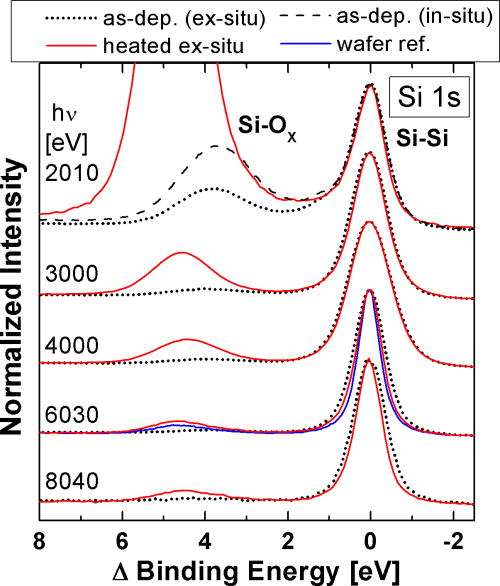
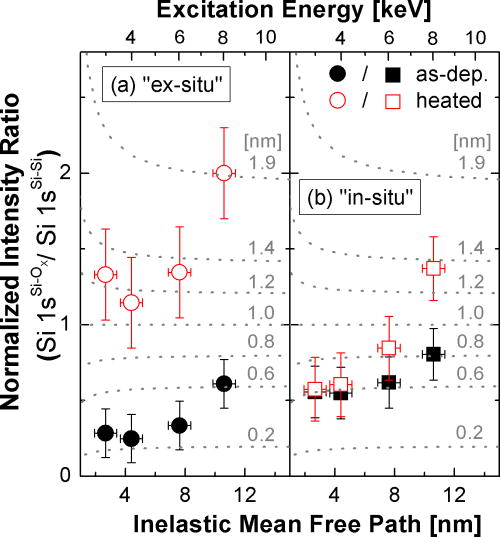
For more details see:
M.Wimmer, M.Bär, D.Gerlach, R.G.Wilks, S.Scherf, C.Lupulescu, F.Ruske, R.Felix, J.Hüpkes, G.Gavrila, M.Gorgoi, K.Lips, W.Eberhardt, and B.Rech, Hard x-ray photoelectron spectroscopy study of the buried Si/ZnO thin-film solar cell interface: Direct evidence for the formation of Si-O at the expense of Zn-O bonds, Appl. Phys. Lett. 99, 152104 (2011).
Earth-abundant Cu2ZnSnS4 ("CZTS") kesterites are promising absorbers for thin-film solar cells. A combination of direct and inverse photoelectron spectroscopy was used to study the band alignment at the CdS/CZTS interface. A "cliff"-like conduction band offset was revealed and a significant etch-induced enhancement of the energetic barrier for charge carrier recombination across the CdS/CZTS interface was found.
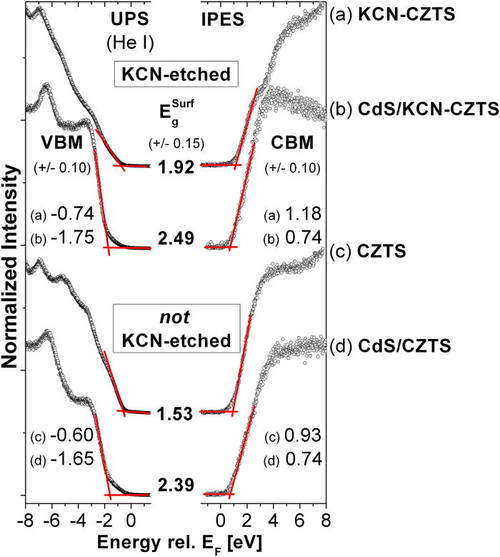
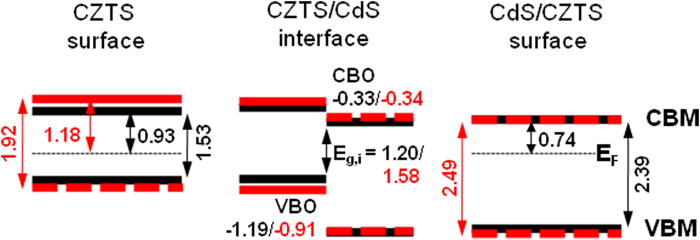
For more details see:
M. Bär, B.-A. Schubert,, B. Marsen, R. G. Wilks, S. Pookpanratana, M. Blum, S. Krause, T. Unold, W. Yang, L. Weinhard, C. Heske, and H.-W. Schock, Cliff-like conduction band offset and KCN-induced recombination barrier enhancement at the CdS/Cu2ZnSnS4 thin-film solar cell heterojunction, Appl. Phys. Lett. 99, 222105 (2011).
The surface composition of Cu(In,Ga)(S,Se)2 ("CIGSSe") thin films intrinsically deviates from the corresponding bulk composition, which also modifies the electronic structure and thus the optical properties. We used a combination of photon and electron spectroscopies with different information depths to gain depth-resolved information on the band gap energy (Eg) in CIG(S)Se thin films. We find an increasing Eg with decreasing information depth, indicating the formation of a surface region with significantly higher Eg. This Eg-widened surface region seems to extend further into the bulk of the sulfur-free CIGSe thin film compared to the CIGSSe thin film.
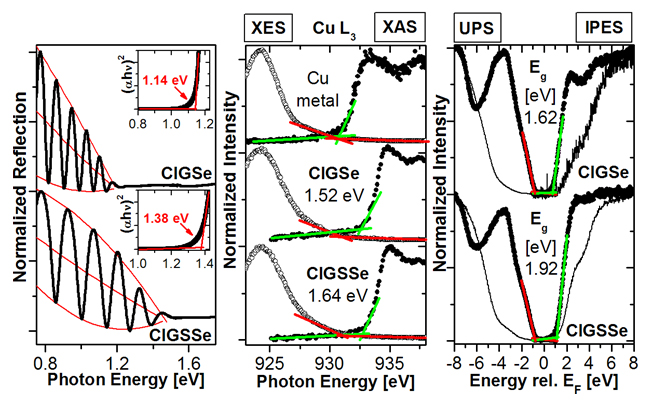
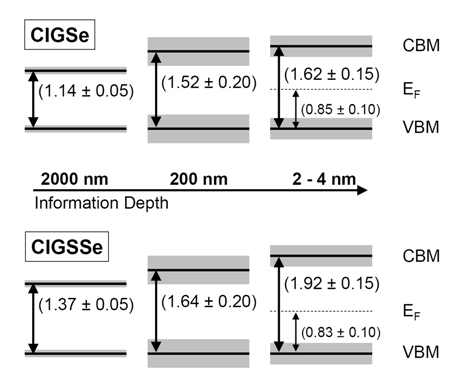
For more details see:
M. Bär, S. Nishiwaki, L. Weinhardt, S. Pookpanratana, O. Fuchs, M. Blum, W. Yang, J.D. Denlinger, W.N. Shafarman, and C. Heske, Depth-resolved band gap in Cu(In,Ga)(S,Se)2 thin films, Appl. Phys. Lett. 93, 244103 (2008).
